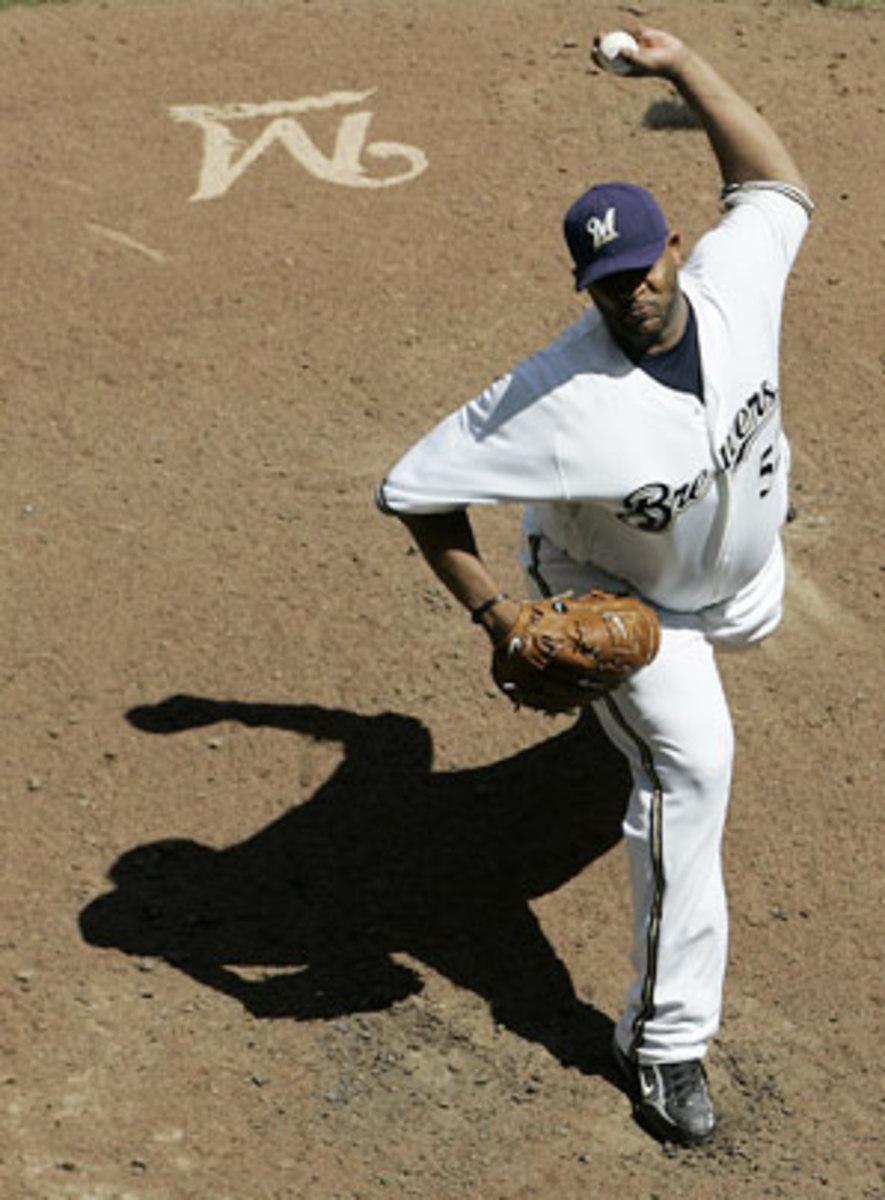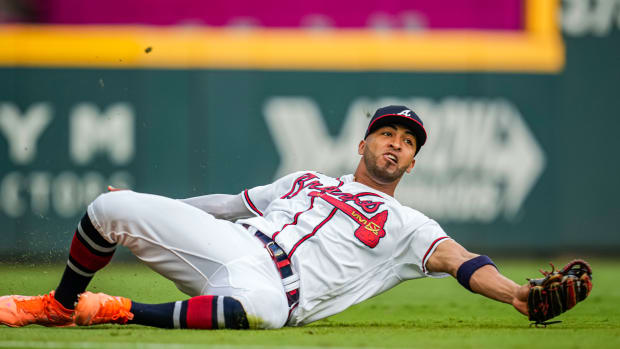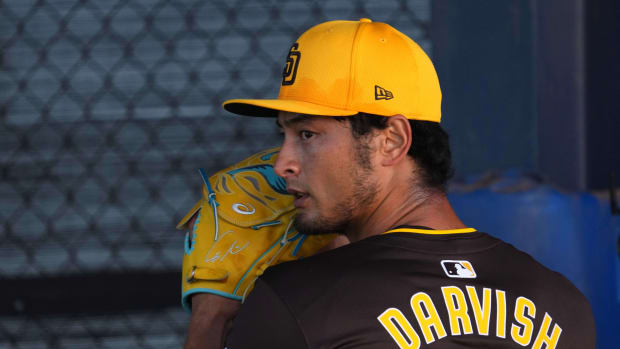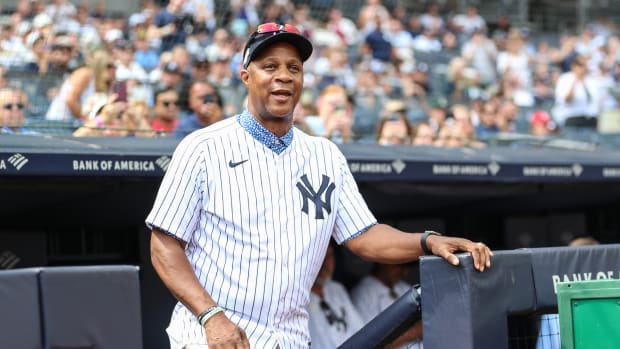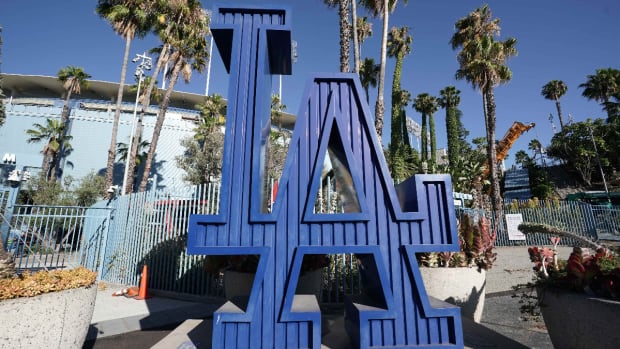Scouting Report: CC Sabathia
Latest in a series of weekly scouting reports provided to SI.com by the network of former scouts, players, coaches and executives at the baseline group.
• Current: Premium
• Projected: Elite
Categorization Scale:
• Elite: top one or two pitchers in the game (Roy Halladay)
• Premium: top ten pitcher (Dan Haren, Josh Beckett, Jake Peavy)
• Good: top of the rotation guy; occasional All-Star (Daisuke Matsuzaka, Mike Mussina, Justin Verlander)
• Average: back of the rotation guy (Oliver Perez, Jarrod Washburn)
• Key role: occasional starter (Julian Tavarez)
CC Sabathia is a Premium category pitcher on the verge of becoming an Elite pitcher if he continues to pitch this way for the next several years. The definition of an elite pitcher is one who has been one of the game's best pitchers over a four to six-year continuous period. Excellence, consistency and longevity are requirements of the elite status.
Sabathia has three plus pitches: fastball, breaking ball and changeup. Despite his girth, he's a low injury risk due to his strong fundamental pitching mechanics. On the PPM (Proper Pitching Mechanics) scale, Sabathia rates a 13 on a scale of 0 to 36. By comparison, Jake Peavy is a moderate risk with a score of 22 and Dontrelle Willis is a high risk with a score of 33.
Sabathia has been the game's best pitcher since his trade to Milwaukee. What's he's done differently? Not that much, actually. In fact, he pitched just as well in his last five starts with Cleveland as his first four starts with Milwaukee. One change is that he's commanding his fastball to his armside of the plate a little better, and this allows Sabathia to get into more pitcher counts.
Something that will help Sabathia for the rest of the year is just being in the National League. Not only will he get to face a pitcher once through the line-up, but on average National League line-ups 1 through 8 are not as good as those in the American League.
Opposing managers are tempted to stack their line-ups with right-handed hitters since Sabathia is a lefty. However, the numbers don't justify this traditional approach. Here are Sabathia's career lines against righties and lefties:
So while Sabathia does do better against lefties, it's not that significant of a difference. The reason is that Sabathia does such a good job pounding hitters inside -- better than anyone in the game -- and it's effective against hitters from both sides of the plate, especially righties. Because a hitter has less time to react to a good inside pitch, he'll tend to make an adjustment against Sabathia by cheating and starting his swing early. When Sabathia sees this adjustment, he'll make his own adjustment and throw his plus slider or plus change-up. This leaves the batter swinging too early and/or above the ball. With his increased focus on the inside pitch, it's not surprising Sabathia is getting hitters to swing at breaking balls in the dear more than ever before.
Three suggestions for how teams should attack Sabathia:
1. Don't be afraid to use a left-handed hitter, especially when the lefty is a better overall hitter than the righty you might replace him with. Don't bat a righty just because he's a righty.
2. Use the hit and run, and do it on the first pitch.
3. Have right-handed hitters stand off the plate. That inside fastball is very tough to turn on.
• Strong and athletic frame
• Durability: he's started at least 28 games in his first seven years
• Innings eater: he's average 6.5 innings per start for his career
• Explosive fastball
• Devastating slider, which is a great out-pitch to left-handed hitters
• Improved change-up is now a plus major league pitch
• Sabathia tends to elevate his fastball in the middle of the plate when he gets tired
• Below average range for fielding bunts
• Girth may eventually become a problem, causing stress on his back and knees
Movement: Sabathia's fastball is straight but shows plus life up in the strike zone. At times it will show cutting action into RH hitters.
Command: His best command with his fastball is to his gloveside of the plate. He does a nice job of using the top of the strike zone and elevating with two strikes on hitters.
Plan: He likes to get ahead in the count with his fastball. He'll pitch it inside off the plate to set up his off-speed stuff as outpitches, and he will use it up in the zone with two strikes.
Movement: Sabathia's slider will show average depth, but he's also capable of sweeping it and changing the angle to LH hitters.
Command: He is able to throw his slider to both sides of the plate. He can also bury it (back foot slider) to RH hitters out of the strike zone and get swings and misses.
Plan: Sabathia doesn't like to show his slider too soon. First time through the order he's more comfortable using FB/CH. He will use his slider as an outpitch more than any other, and he'll use it both in and out of the strike zone.
Movement: His change-up will show some tailing action, but not much. It will also have sink to it when it is down and out of the strike zone.
Command: His best command with this pitch is down and to his armside.
Plan: CC will use his change-up early in the game. He's most comfortable using it off of his fastball and in hitter counts (1-0, 2-0). He has a lot of confidence in his change-up, but he doesn't use it much to LH hitters -- he doesn't need to!
Sabathia has improved his mechanics thanks to the work of Cleveland pitching coach Carl Willis. He's been able to maintain a consistent approach after being traded, which shows maturity (bad news for opponents). He has better balance over the rubber by utilizing a pause in his pitching motion to allow for full arm extension. This action limits his tendency to rush forward, and it's also created a consistent arm slot for the big left-hander.






























